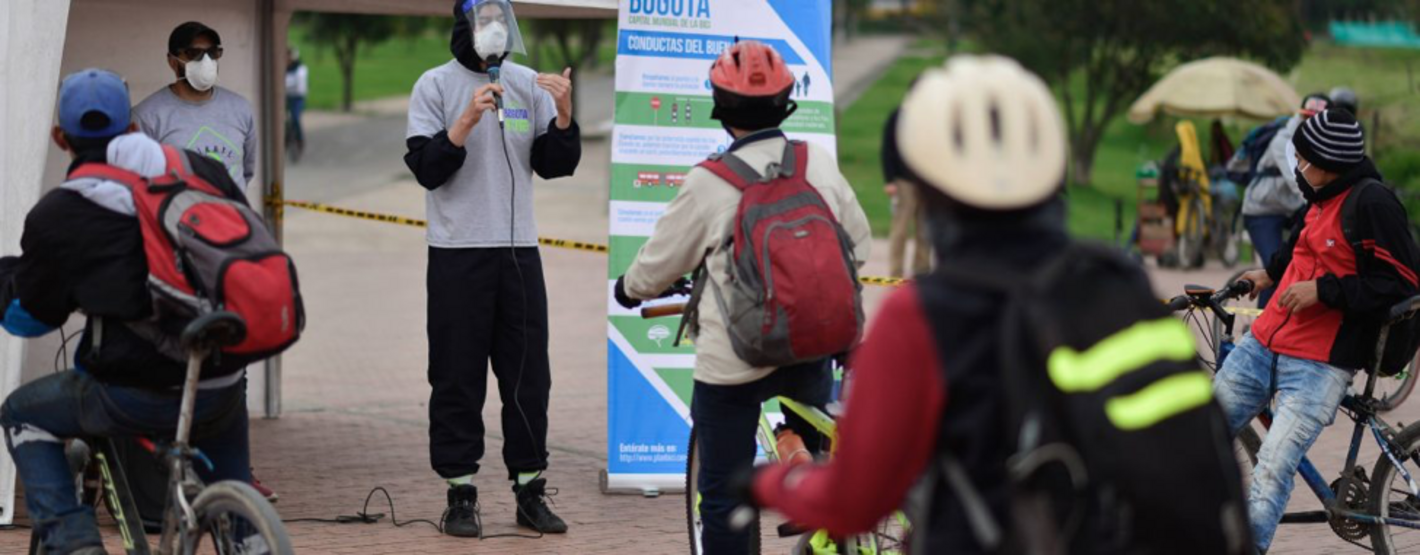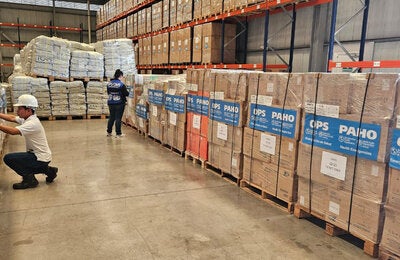
Bogotá’s Ciclovías (bike lanes) have been extended to prevent the spread COVID-19 by further reducing crowding and person-to-person contact on the city’s public transport network. They are also helping to reduce congestion and improve traffic safety.
Responding to transport and mobility challenges
In early 2020 Bogotá’s mayor added 84 km (52 miles) of temporary new bike lanes to the city’s existing 550 km Ciclovía network, promoting the use of active, alternative and sustainable transport. The new lanes – which function 24 hours a day, 7 days a week – make Bogotá’s Ciclovía network among the largest of its kind in the world. According to a virtual survey held in the city during July and August, citizen interest in cycling is growing, as evidenced by a recent doubling in the number of people who would use cycling as a means of transport around the city, from 8% to 16%.
Bogotá was among the first cities in the world to add “pop-up” cycle lines to existing routes to improve city transport options. The global need to respond quickly to the mobility challenges associated with COVID-19 has seen governments around the world similarly take advantage of the flexibility of Ciclovía-type initiatives, and their potential to enhance the function of city streets as public spaces. As of July 2020, at least 92 cities in 20 countries on 3 continents had expanded sidewalks and bike lanes by making them wider, longer, and better connected; had implemented new everyday Ciclovía programmes; or had expanded their current programmes as part of strategies to support physical distancing and traffic safety. Workshops are offered to Ciclovía users on preventing the spread of COVID-19, reminding them to keep their hands and bikes sanitized, and to maintain a safe distance from other cyclists.
Shaping future transport policy
The Ciclovías were already boosting sustainable transport options and increasing physical activity in Bogotá, but long-term, this project will help inform and shape transport policy and practice responses to the current COVID-19 pandemic as well as future pandemics. Additionally, it will document the potential role of these initiatives as important resources for promoting population health and well-being by encouraging active travel and physical activity, and by providing alternatives for commuting in the city, with the potential added benefit of decreasing air pollution levels. It is also a strong example of multisectoral collaboration in the interests of transport and health – the key institutions leading the initiative were the District Secretariat of Mobility, the District Institute for Sports and Recreation, and the Mayor of Bogotá.



